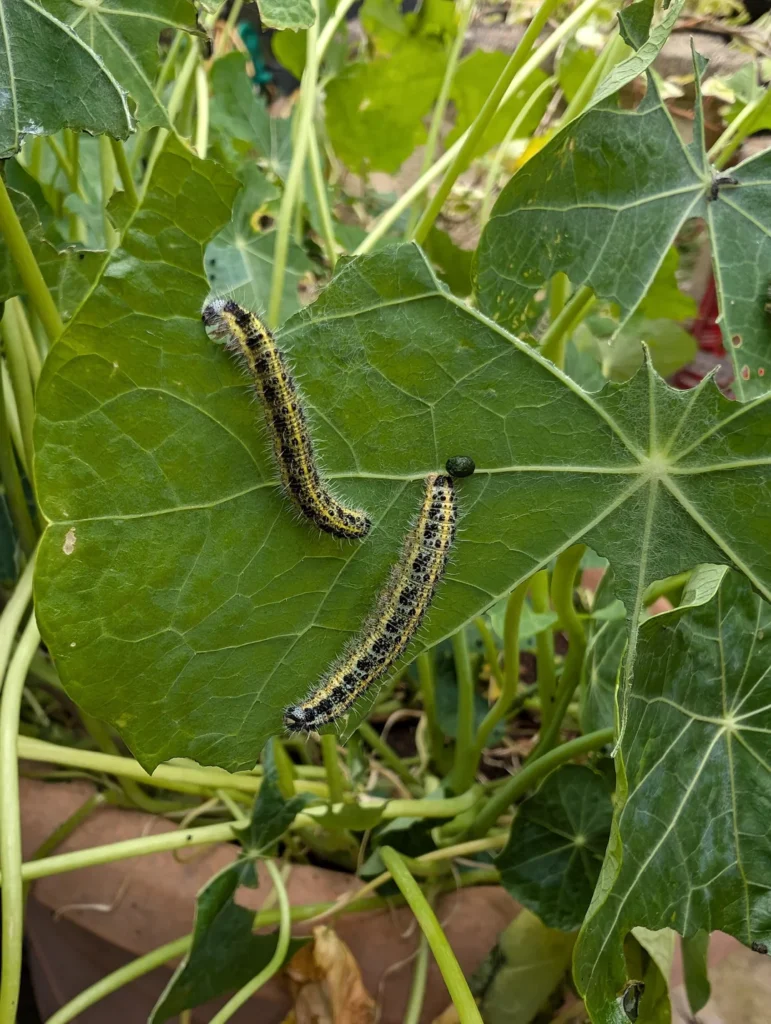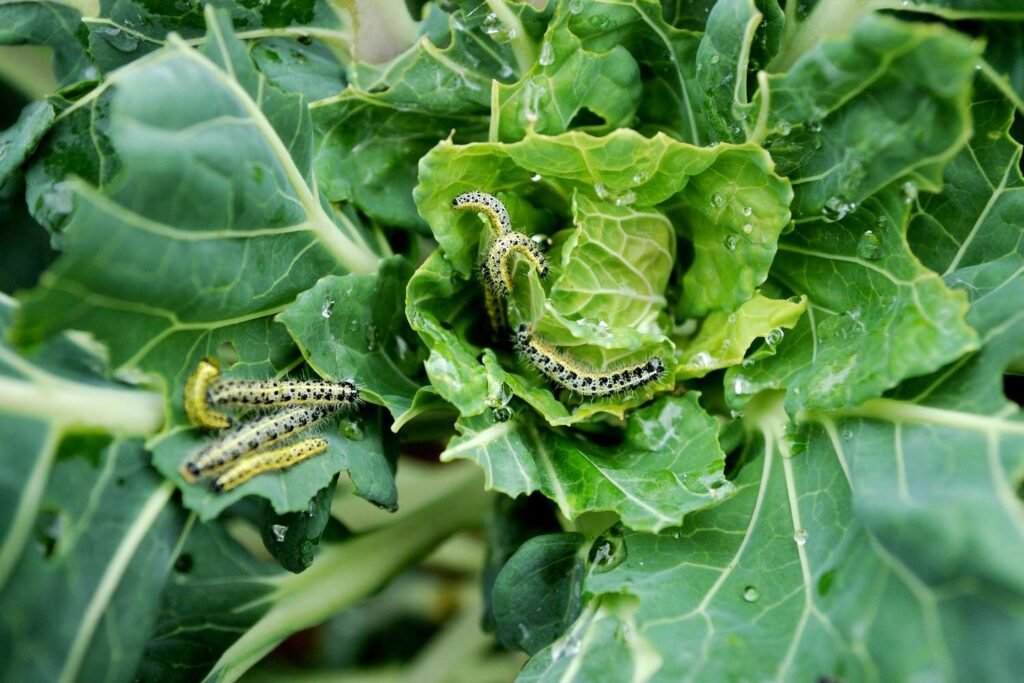Few things are more frustrating to gardeners than walking out to admire a thriving vegetable patch only to find chewed leaves, half-eaten fruits, and plants struggling under attack. Among the most common culprits behind such destruction are caterpillars—the larval stage of moths and butterflies. While some species grow into beautiful butterflies, their caterpillar form can cause serious damage to vegetables if left unchecked.
Learning how to identify caterpillars eating your veggies is the first step toward protecting your garden. This article will provide detailed guidance on spotting different types of caterpillars, understanding the signs they leave behind, and distinguishing between harmful and harmless species.
Why Caterpillars Target Vegetable Gardens

Caterpillars are leaf-eating machines. Unlike their adult butterfly or moth counterparts, which usually sip nectar, caterpillars need to consume large amounts of plant material to fuel their rapid growth. Vegetables offer tender, nutrient-rich foliage that makes the perfect food source.
The main issues caused by caterpillars in gardens include:
- Skeletonized or ragged leaves.
- Holes in fruits and pods.
- Stunted growth due to loss of foliage.
- Weakened plants more vulnerable to disease.
General Signs of Caterpillar Damage

Before you even see a caterpillar, you might notice their presence through the damage they cause. Key indicators include:
- Chewed Leaves: Uneven edges or missing chunks, often starting at the leaf margins.
- Skeletonized Foliage: Some species eat the green parts of leaves but leave veins intact.
- Frass (Droppings): Small black or brown pellets around the base of plants or on leaves.
- Webbing or Silken Tents: Certain caterpillars, like webworms, create silk shelters over leaves.
- Bored Holes in Fruits: Tomato hornworms, corn earworms, and cabbage loopers often bore into vegetables or fruits.
Once you spot these signs, the next step is to identify which caterpillar is responsible.
Common Caterpillars That Attack Vegetables

1. Tomato Hornworm
- Appearance: Large, green caterpillars (up to 4 inches long) with white diagonal stripes and a curved horn-like projection at the rear.
- Host Plants: Tomatoes, peppers, eggplants, and potatoes.
- Damage: Defoliates tomato plants rapidly and also chews on green fruit.
- Identification Tip: Look for large, distinct droppings and missing leaves at the top of tomato plants.
2. Cabbage Looper
- Appearance: Smooth, light green caterpillars with thin white stripes. They move in a “looping” motion like inchworms.
- Host Plants: Cabbage, kale, broccoli, cauliflower, spinach, and lettuce.
- Damage: Leaves riddled with irregular holes, especially in leafy greens.
- Identification Tip: Caterpillars often hide on the undersides of leaves during the day.
3. Cutworms
- Appearance: Fat, gray or brown caterpillars that curl into a “C” shape when disturbed. They live in soil rather than on plants.
- Host Plants: Almost all young seedlings, including lettuce, beans, tomatoes, and peppers.
- Damage: Cut seedlings off at ground level overnight.
- Identification Tip: Check soil around damaged seedlings to find them curled near the base.
4. Armyworms
- Appearance: Green, brown, or black caterpillars with longitudinal stripes. They often move in large groups, “marching” across gardens.
- Host Plants: Corn, beans, lettuce, peppers, and many others.
- Damage: Rapidly defoliates plants, leaving only stalks or stems.
- Identification Tip: Damage usually appears suddenly and across large areas due to their group feeding.
5. Corn Earworm (a.k.a. Tomato Fruitworm)
- Appearance: Brown, green, or pinkish caterpillars with stripes, growing up to 2 inches long.
- Host Plants: Corn, tomatoes, peppers, beans.
- Damage: Bore into corn ears, tomatoes, or bean pods, contaminating them with frass.
- Identification Tip: Check inside corn ears near the silk or inspect fruit for small entry holes.
6. Imported Cabbageworm

- Appearance: Velvety green caterpillars with faint yellow stripes. They are larvae of the small white butterfly often seen fluttering around brassicas.
- Host Plants: Cabbage, broccoli, cauliflower, kale, collard greens.
- Damage: Chews large, ragged holes in leaves and leaves green droppings behind.
- Identification Tip: Spotting white butterflies hovering over brassicas is a giveaway that caterpillars will soon appear.
7. Webworms
- Appearance: Small green or brown caterpillars that spin webs over leaves.
- Host Plants: Beans, peas, and other vegetables.
- Damage: Leaves covered in silk webs and eaten within these enclosures.
- Identification Tip: Presence of webbing on leaves is the clearest sign.
How to Identify Caterpillars Effectively

When trying to figure out what’s eating your veggies, follow these steps:
- Examine Damage Patterns – Holes in leaves suggest loopers or cabbageworms, while cut stems suggest cutworms.
- Inspect at Different Times of Day – Some caterpillars (like cutworms) are nocturnal.
- Check Under Leaves and Soil – Caterpillars often hide from predators during the day.
- Look for Frass – Droppings can help confirm caterpillar activity.
- Note Host Plant – Many caterpillars are plant-specific, so knowing which vegetable is affected narrows possibilities.
Beneficial Caterpillars vs. Harmful Ones
It’s worth remembering that not all caterpillars are enemies. Some are harmless or even helpful to ecosystems by supporting pollinators. For example:
- Monarch Caterpillars: Feed exclusively on milkweed, not your vegetables.
- Swallowtail Caterpillars: May eat dill, fennel, or parsley but rarely cause large-scale vegetable destruction.
Gardeners should learn to distinguish between these species and true pests before taking action.
Natural Ways to Manage Caterpillars
Identifying the caterpillar is only half the battle. Once you know which pest is attacking, you can use eco-friendly solutions to keep populations in check.
- Handpicking: For large caterpillars like tomato hornworms, handpicking is simple and effective.
- Neem Oil: Acts as a deterrent and disrupts caterpillar feeding without harming most beneficial insects.
- Bacillus thuringiensis (Bt): A natural soil bacterium that targets caterpillar digestion but is safe for humans, pets, and pollinators.
- Encourage Predators: Attract birds, ladybugs, and parasitic wasps that prey on caterpillars.
- Floating Row Covers: Physically block adult moths and butterflies from laying eggs on plants.
- Companion Planting: Planting herbs like basil, dill, or marigold can repel certain caterpillars.
Preventing Future Caterpillar Damage
Prevention is just as important as control. To reduce caterpillar infestations long term:
- Rotate crops yearly to break pest life cycles.
- Remove plant debris where moths and butterflies may lay eggs.
- Monitor regularly for early signs of infestation.
- Use intercropping techniques to confuse pests.
Conclusion
Caterpillars can be a gardener’s nightmare when they target vegetable crops, but identifying the species responsible is key to protecting your harvest. From the giant tomato hornworm to the sneaky cutworm or the ever-present cabbage looper, each caterpillar leaves behind distinct signs.
By learning to spot these pests, gardeners can take quick action—whether through handpicking, using natural treatments like Bt, or encouraging natural predators. At the same time, it’s important to recognize that not all caterpillars are bad; some support pollinator species and add ecological balance.
In short, the secret to keeping your veggies safe lies in observation, identification, and targeted control. With a watchful eye and the right strategies, you can enjoy a thriving vegetable garden free from unwanted chewing companions.
